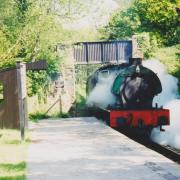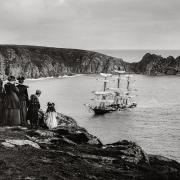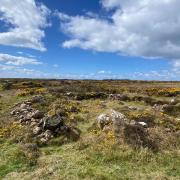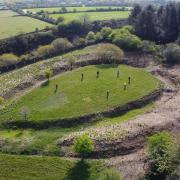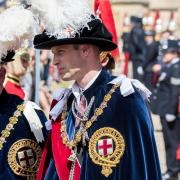When you think Cornish cuisine - you might picture fresh caught fish served fine dining style - or even the humble pasty - but what about a proper Cornish tea treat, asks Merv Davey
The Cornish for kitchen is Kegin, giving is the delightful expression 'Keginieth Kernow' for Cornish Cuisine. Indeed, Cornish cuisine with its freshly caught fish and farm produce accompanied by local wines and beers has joined the ubiquitous pasty as part of 'Brand Kernow' in the hospitality industry. A tradition strongly associated with Cornish fare is that of the “Tea Treat” and for many the very term itself conjures up images of giant saffron buns. As a childhood memory the size is exaggerated even more by relative hand size!

Tea Treats have an interesting social history in Cornwall. They have their roots in the Sunday Schools introduced to provide basic education as well as religious teaching in the late 18th century. Part of the attraction of the Sunday Schools were regular events involving a parade, games and music all rounded off with a spread of splits, jam, cream, hevva cake, saffron buns, and copious quantities of tea. They were quickly adopted by the burgeoning chapel culture of the early nineteenth century and provided a focus for local communities. The rapid industrialisation of Cornwall in the 19th century was not without its social problems and the Tea Treats were presented as an alternative to less temperate entertainments. By the end of the century Tea Treats had become a well-established custom with each chapel or village competing with its neighbour for the best entertainment, games and spread.

The Tea Treats were outdoor events and music was an integral part of the action. In the early days it was provided by itinerant musicians or the village band but as the brass band movement developed in Cornwall, so they became feature of the event. A brass band would lead the parade at the start and perform throughout the event and lead the evening concert. The music played consisted of a mixture of hymns and popular music of the time. In the late nineteenth century lively marches and polkas and marches were sometimes written or adapted from traditional tunes especially for these events. Titles like the “Sunny Corner March”, “Falmouth Polka” and “Frogpool March” capture the atmosphere of the time and the tunes continue to be played for Cornish social dances today.
Children and young people engaged in a variety of games with intriguing names like the Jolly Miller, the Dugging Ring and Kiss in the Ring. As the name suggests the latter was a game for young people that offered an opportunity to choose a partner for the evening! A large ring was formed with one person left outside and it was his or her chance to choose someone of the opposite sex by poking them in the back. They then had to chase the one who had chosen them and when they caught them, give them a kiss on the cheek. There is an old saying “Tea Treat Man Sure to Stand” and many a marriage was attributed to the custom.

There is a fine line between games and dances and two dances are firmly associated with the Tea Treat, the Serpent, and the Snail Creep. The Serpent Dance is sometimes known as the Serpentine Walk or Snake Dance and is a direct descendant of the Medieval Farandole with a line of dancers spiralling around, weaving in and out and “threading the needle” as the last couple make an arch for the lead couple to double back through. The Cornish Tea Treat took this dance to a new level by involving several hundred people in one long line and placing a full brass band in the lead. There were variations on the Serpent dance across Cornwall and in some cases a particular individual acted as the lead and repeated the same complex pattern each year. The villages of the Clay Country in mid Cornwall had their own dance, the Snail Creep. In this case the line comprised of couples, hand in hand in a procession following the band and again there were large numbers involved. The dance was led by two people holding out branches like the tentacles of a snail who led the procession through a series of spirals and convolutions to represent a snail shell.
The Tea Treats were an integral part of Cornish life for nearly two centuries but lost out to mass media and new entertainments in the post War period. Fashion changes and today there is an increasing interest in reviving these community traditions. In recent years, for example, the village of Rescorla revived the Snail Creep after the discovery that it had its own special tune. Splits, cream, and jam remain with us of course and both hevva cake and large saffron buns make an occasional appearance on the shelves of Cornish bakers. There remain many people for whom mention of Tea Treats brings a smile to their face and a recollection of the large bun they grappled with as a child.
In 2021 Hannah Hawken arranged a series of 19th Century Tea Treat marches for Brass Band which were then then brought to life in a series of videos by St Austell Town Band. To watch the videos, hear the music and follow the story of the Cornish Tea Treats visit cornishnationalmusicarchive.co.uk.











